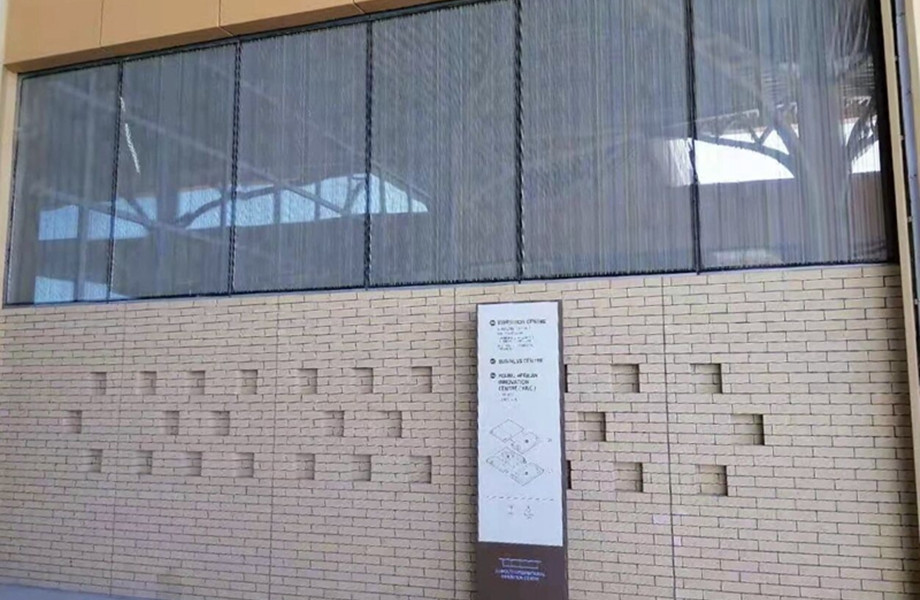In general, the energy saving of doors and windows is mainly reflected in the improvement of the thermal insulation performance of doors and windows. The energy saving of doors and windows in the cold areas in the north focuses on heat insulation, the hot summer and warm winter areas in the south focus on heat insulation, while the hot summer and cold winter areas should be both heat insulation and heat insulation. The following aspects can be considered to improve the thermal insulation performance of windows and doors.
2802.jpg)
Strengthen the thermal insulation performance of doors and windows
The focus here is on existing buildings in southern regions of China, such as hot summer and cold winter regions and hot summer and warm winter regions. The heat insulation performance of doors and windows mainly refers to the ability of doors and windows to block solar radiation heat from entering the room in summer. The main factors affecting the thermal insulation performance of windows and doors are the thermal and photophysical properties of window and door materials, inlay materials (usually referred to as glass), etc.
The smaller the thermal conductivity of the window and door frame material, the smaller the conduction coefficient of the window and door. For windows, the use of various special heat-reflecting glass or heat-reflecting films have a good effect, especially the use of reflective materials with strong reflection ability for mid-infrared rays of sunlight is more ideal, such as low-emissivity glass. However, when selecting these materials, the lighting problem of the window should be considered, and the heat insulation performance cannot be improved by losing the light transmission of the window, otherwise its energy-saving effect will be counterproductive.
2223.jpg)
Strengthen the shading measures inside and outside the window
On the premise of meeting the design requirements of the building, the addition of an external visor, awning, and the appropriate increase of the mediation length of the south balcony can play a certain shading effect. A thermal reflective fabric curtain coated with metal film is set on the inside of the window, and the front has a decorative effect, forming an about 50mm thick space air layer between the glass and the curtain. Such can obtain very good heat reflection heat insulation effect, but direct daylighting is poor, should be made into activity type. Additionally, the shutter curtain that has certain heat reflection action is installed inside the window, which also can obtain a certain heat insulation effect.
6634.jpg)
Improve the insulation performance of windows and doors
Improving the thermal insulation performance of doors and windows outside buildings mainly refers to improving the thermal resistance of doors and windows. Because the thermal resistance of single-layer glass windows is very small, the temperature difference between the inner and outer surfaces is only 0.4℃, so the thermal insulation performance of single-layer windows is very poor. The use of double-layer or multi-layer glass windows, or insulating glass, can significantly improve the thermal insulation performance of the window by taking advantage of the large thermal resistance of the air interlayer.
In addition, the selection of door and window frame materials with low thermal conductivity, such as plastic and heat-insulated metal frame materials, can improve the thermal insulation performance of external doors and windows. Generally speaking, this improvement in performance also improves the thermal insulation performance.
5374.jpg)
Improve the airtightness of windows and doors
Improving the airtightness of windows and doors can reduce the energy consumption generated by that heat exchange. At present, the airtightness of the exterior doors and windows of the glass building is poor and should be improved by the production, installation, and addition of sealing materials of the doors and windows. In the design, the determination of this indicator can be considered according to the sanitary air exchange volume of 1.5 times/h, that is, it is not necessarily required that the doors and windows are dense and airtight. For buildings in northern areas, the impact of enhancing the air tightness of windows and doors on reducing energy consumption for heating in winter is very great.


.jpg)
.jpg)
9879.jpg)
.jpg)
.jpg)


.jpg)
.jpg)
.png)
.png)
.png)
.jpg)
.jpg)